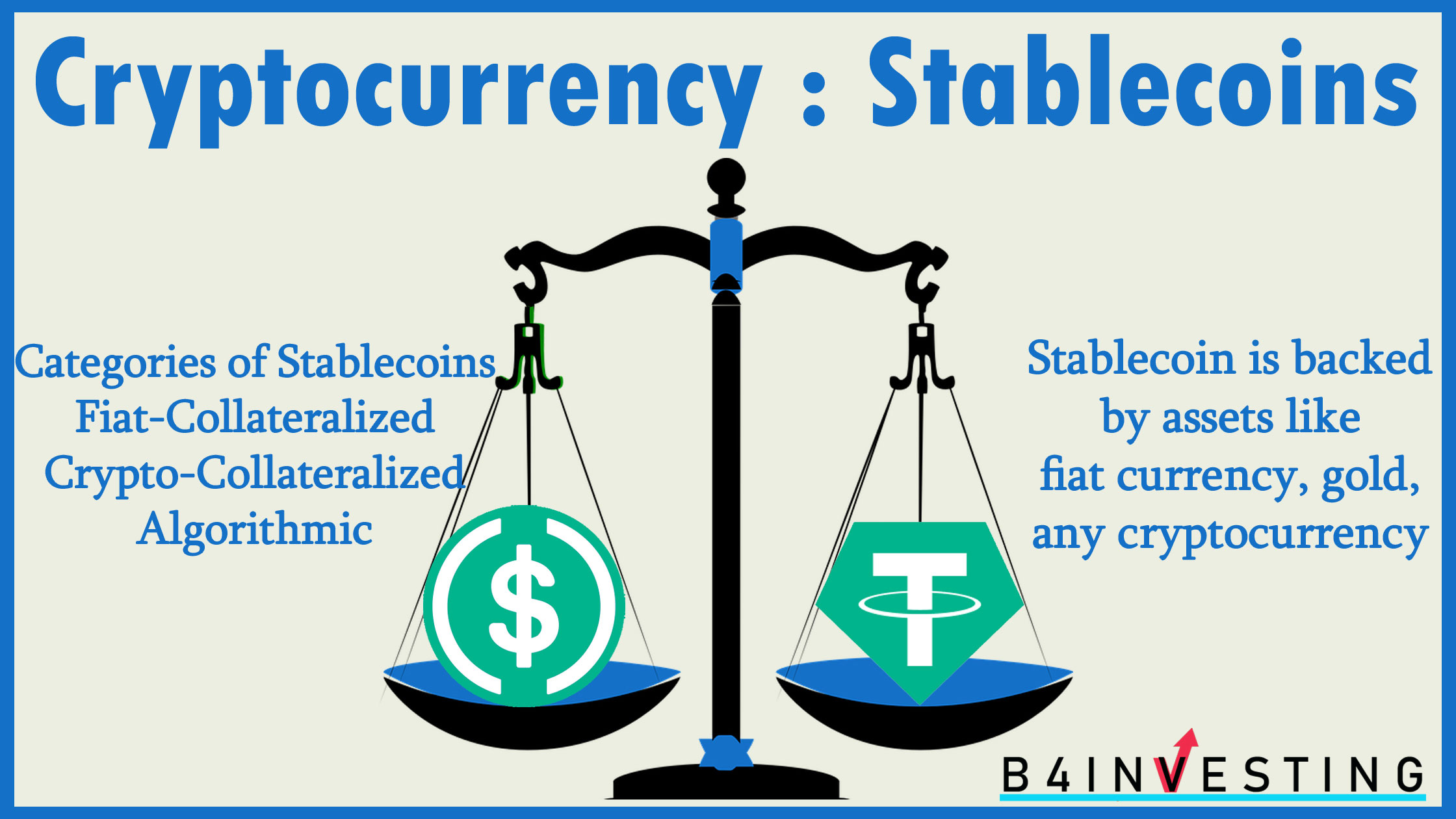
What Are Stablecoins And How Do They Work
As the name suggests, stablecoin is the type of cryptocurrency which offers stability as it is backed by assets like fiat currency, gold or other cryptocurrency. Cryptocurrency is a type of digital currency that can be used as a means of payment to purchase goods and services. Cryptocurrency servers the purpose of ordinary money like dollars, pounds, rupees, etc. but does not have a physical form like banknotes or coins. Cryptocurrency is a new form of digital money. Cryptocurrency is very volatile in nature. In 2010, one bitcoin was costing about $0.08 and now price of bitcoin is $59,172.10.
Cryptocurrencies like Bitcoins, Ethereum, Ripple, Dogecoin are not pegged to stable asset. Their value is derived from a combination of peer-to-peer technology and software driven cryptography. Whereas stablecoin tracks the underlying asset to which its pegged to, making its value stable over time. The value is relative to the currency it’s pegged to. This keeps price stable and less prone to significant drops in value.
Read also: Bitcoin vs Gold: Which Should You Buy Gold or Bitcoin?
How do stablecoins work?
Fiat currencies are backed by central banks and government. Cryptocurrencies are not backed by any government. Stablecoins attempt to bridge this gap between fiat currencies and cryptocurrencies. There are 3 categories on stable coins:
| Fiat-Collateralized Stablecoins These stablecoins keep specific amount of fiat currency like US dollar as collateral to issue cryptocurrency. Other forms of collateral can include gold, silver and commodities like oil. Tether (USDTUSD) and TrueUSD (TUSDUSD) are popular crypto coins that have a value equivalent to that of a single U.S. dollar and are backed by dollar deposits. |
| Crypto-Collateralized Stablecoins Crypto-collateralized stablecoins keep other cryptocurrencies as collateral. As cryptocurrency prone to high volatility, such stablecoins are over-collateralized. A larger number of cryptocurrency tokens is maintained as a reserve for issuing a lower number of stablecoins. Backed by Ethereum (ETHUSD), MakerDAO’s DAI (DAIUSD) is pegged against the U.S. dollar. Bitcoins of worth $2000 might be required to issue stablecoins worth $1000 so even if bitcoin loses 35% value, stablecoins will be covered. |
| Non-Collateralized (Algorithmic) Stablecoins These stablecoings don’t use any reserve but uses a mechanism like central bank uses to retain a stable price. How central bank prints banknotes to maintain valuations of the fiat currency, these stablecoins use a consensus mechanism to increase or decrease the supply of tokens on a need basis. These stablecoins use a computer algorithm to keep the coin’s value from fluctuating too much. If the price of stablecoin rises, algorithm release more tokens into supply to bring the price down. |
What Are the Main Use Cases for Stablecoins?
At present, when cross border transactions are made, they have to pay transfer fees, exchange fees to convert one fiat currency into another. Popular stable coins make such transfers instantly on the blockchain, and far more cheaply.
Some of the world’s biggest economies are looking into launching new stablecoins, which are referred to as central bank digital currencies, or CBDCs. You can also earn interest on cryptocurrencies by crypto lending. For bitcoin lending these interest rates usually are from 3% to 7% but they can be a lot higher (up to 17%) on more stable assets such as stablecoins.
What are the risks of stablecoins?
When you talk about stablecoins, it deals with several parties in a transaction, like bank holding the reserves and the organization issuing the stablecoin. So both bank and organization must do right things like security, reserving, etc. for the currency to maintain its value. Main part of stablecoin is; it is backed by some reserve. Without the presence of reserve, the value of stablecoin is not guaranteed.
Security is also one more risk involved with cryptocurrency. As stablecoin is a type of cryoptocurrency, it has to be stored digitally. There is chance of theft through hacking.
What are some of the most popular stablecoins?
Bitcoin has given about over 70% return in year 2021 which no other investment has given till now. Stablecoin is not so volatile in nature. Following are few popular stablecoins in market:
- Tether (USDT): $68 billion
Tether is a stablecoin, pinned 1:1 to the U.S. dollar. Tether is issued by a Hong Kong-based company, also called Tether. - USD Coin (USDC): $33 billion
USDC is a stablecoin, whose price is $1, was launched by crypto exchange Coinbase and payments company Circle. - TerraUSD (UST): $3 billion
Terra USD (UST) is an algorithmic stablecoin that is pegged to the US Dollar by Terra LUNA. - Binance Stablecoin (BUSD): $14.2 billion
Binance USD is a 1:1 USD-backed stablecoin issued by top crypto exchange Binance, in partnership with Paxos. The stablecoin price is always $1, and BUSD is regulated by the New York State Department of Financial Services.
Takeaway:
Definition of stablecoin is simple. Stablecoin is cryptocurrency but it is stable as compared to other cryptocurrencies. Stabelcoin seems to have limited risk as compared to other cryptocurrencies. But if someone wants to invest in stablecoins should study before investing in them as despite of having stability it is cryptocurrency. Cryptocurrency is new concept and it is not advisable to invest all your savings.

